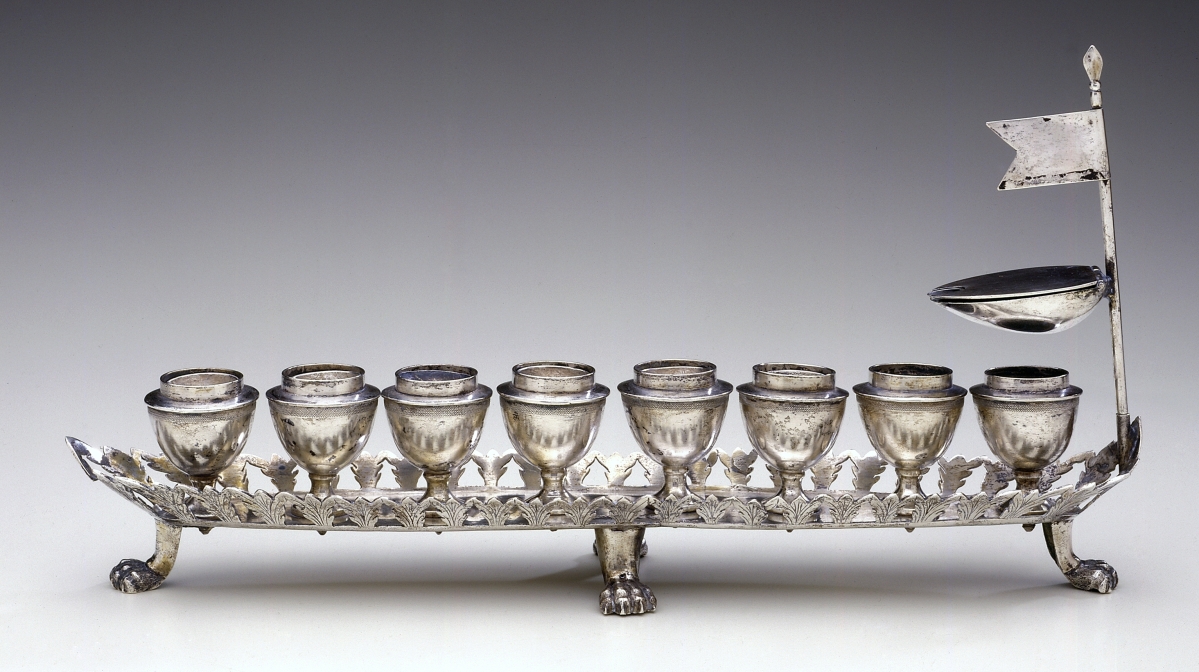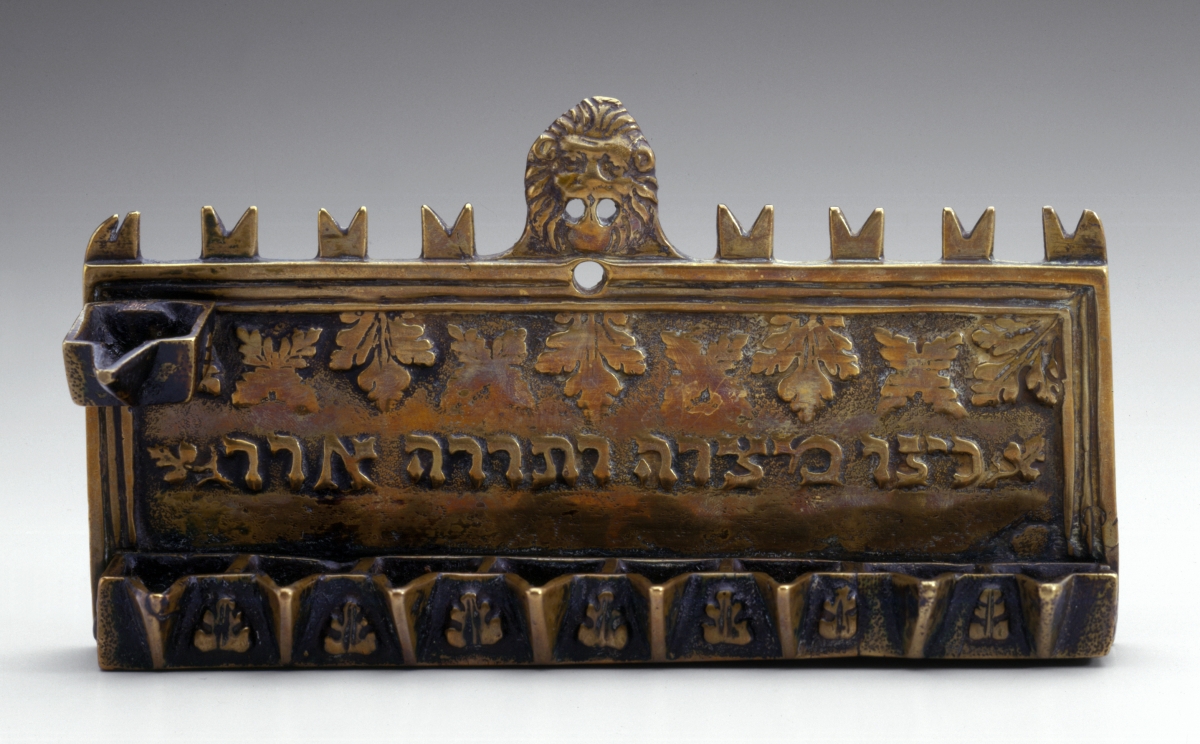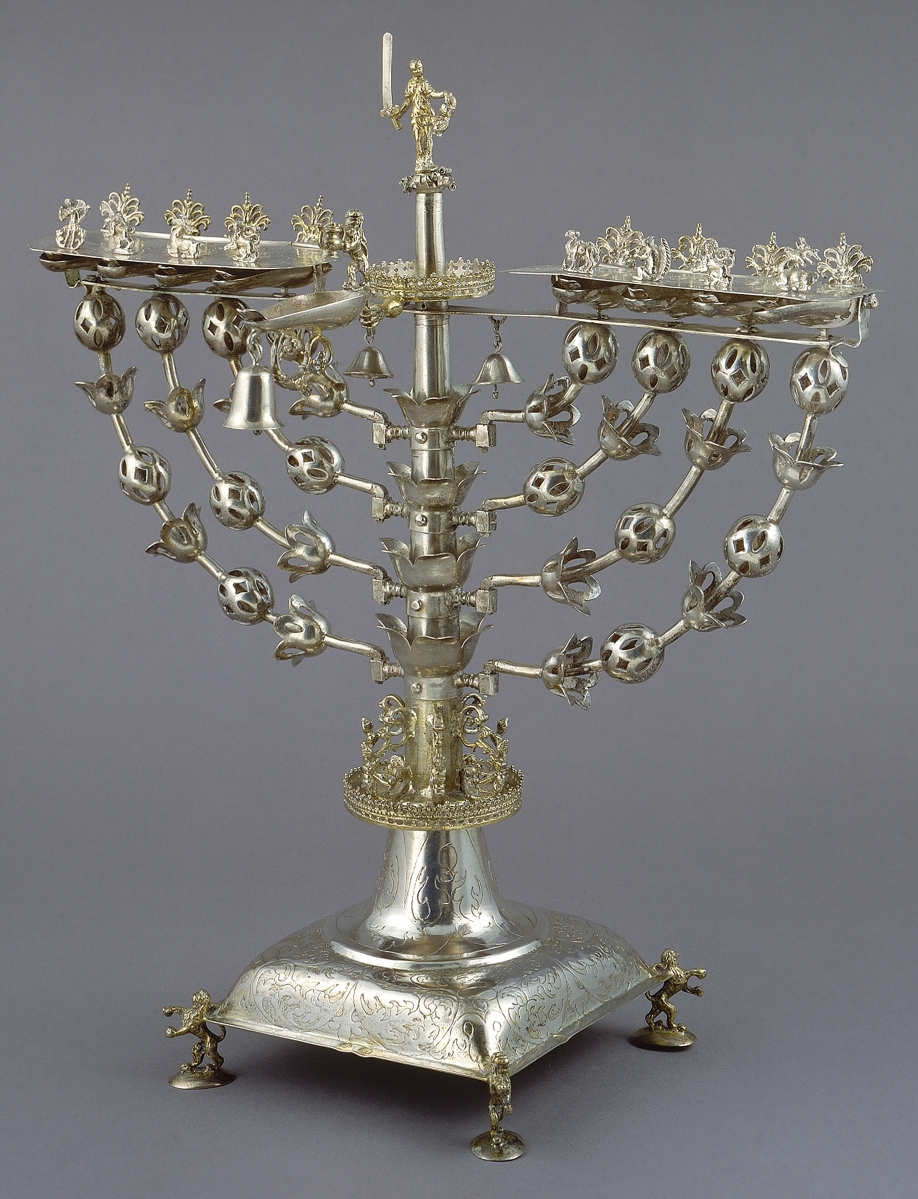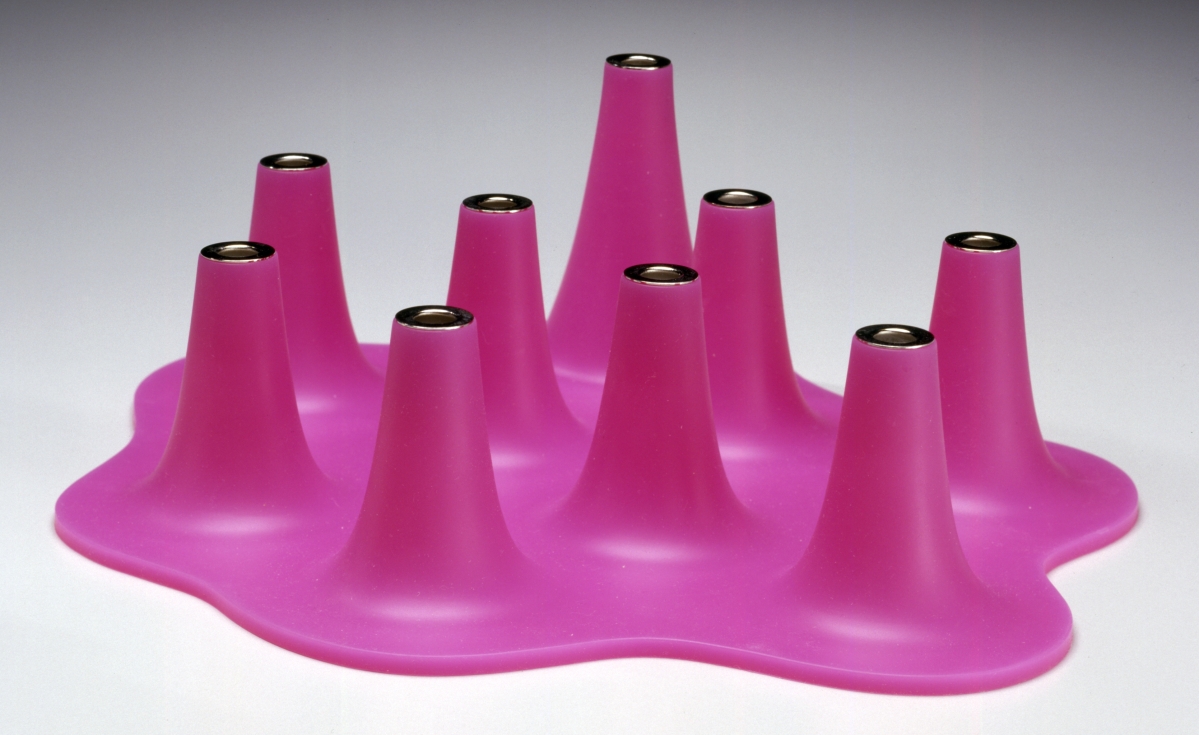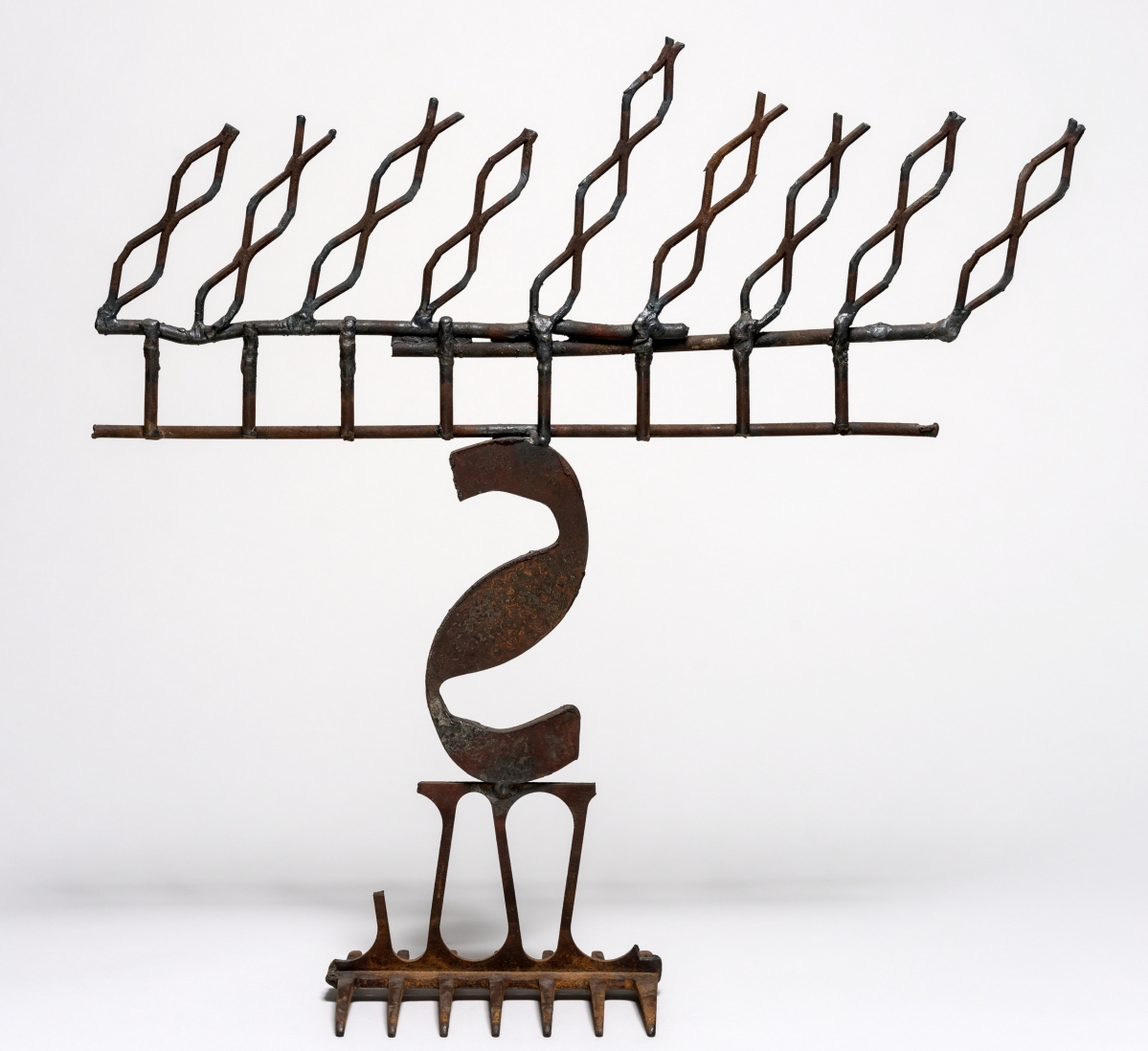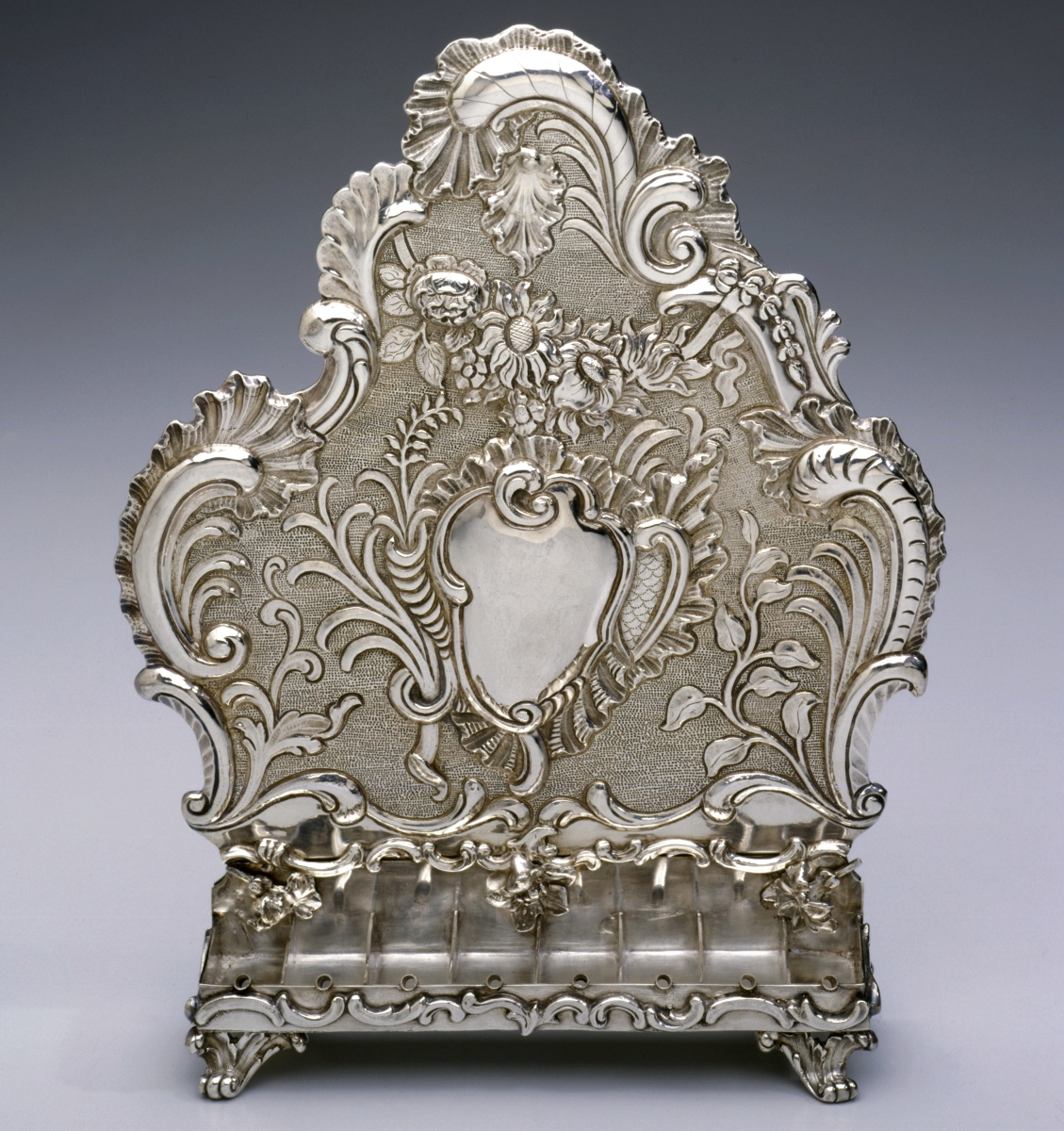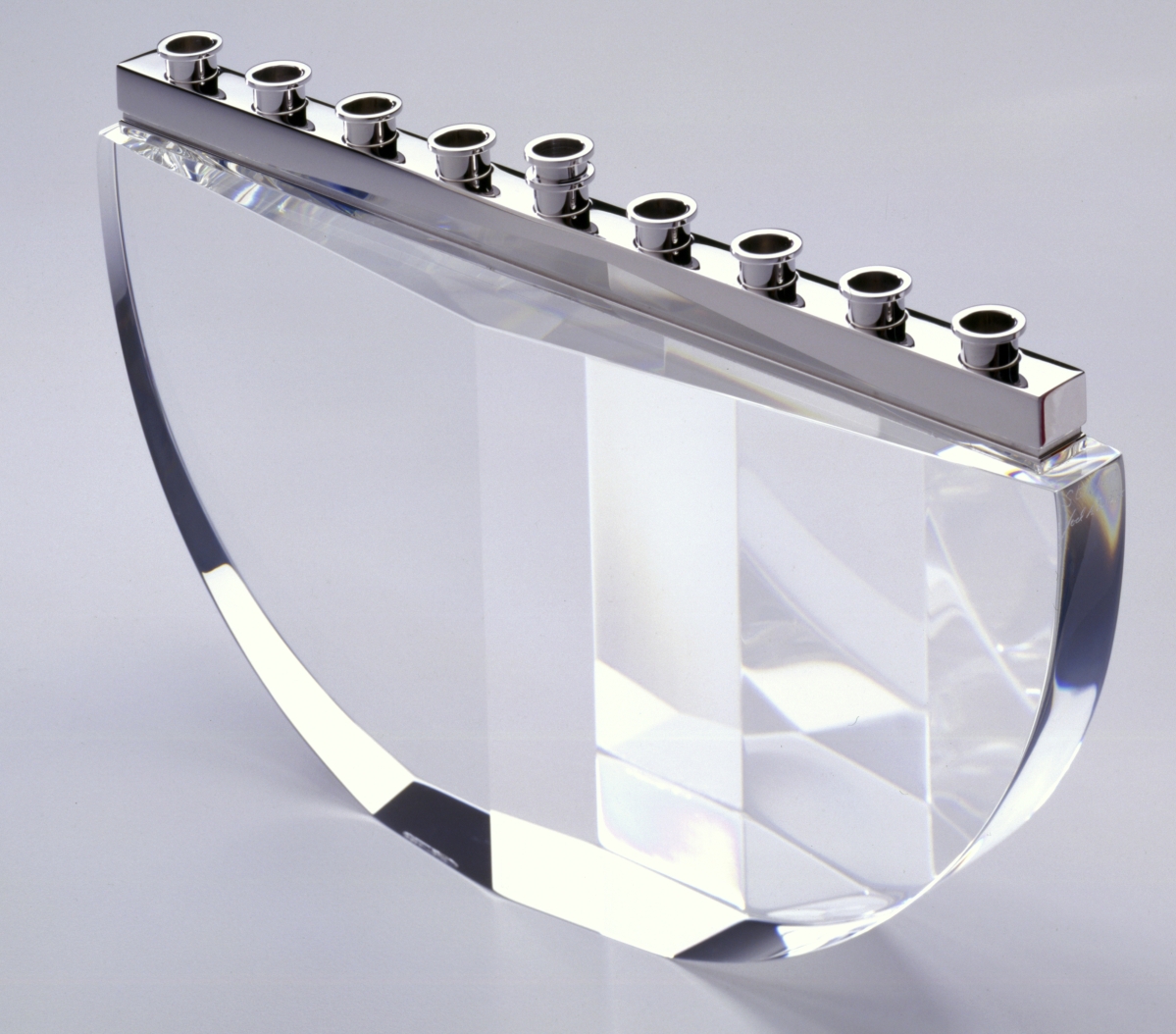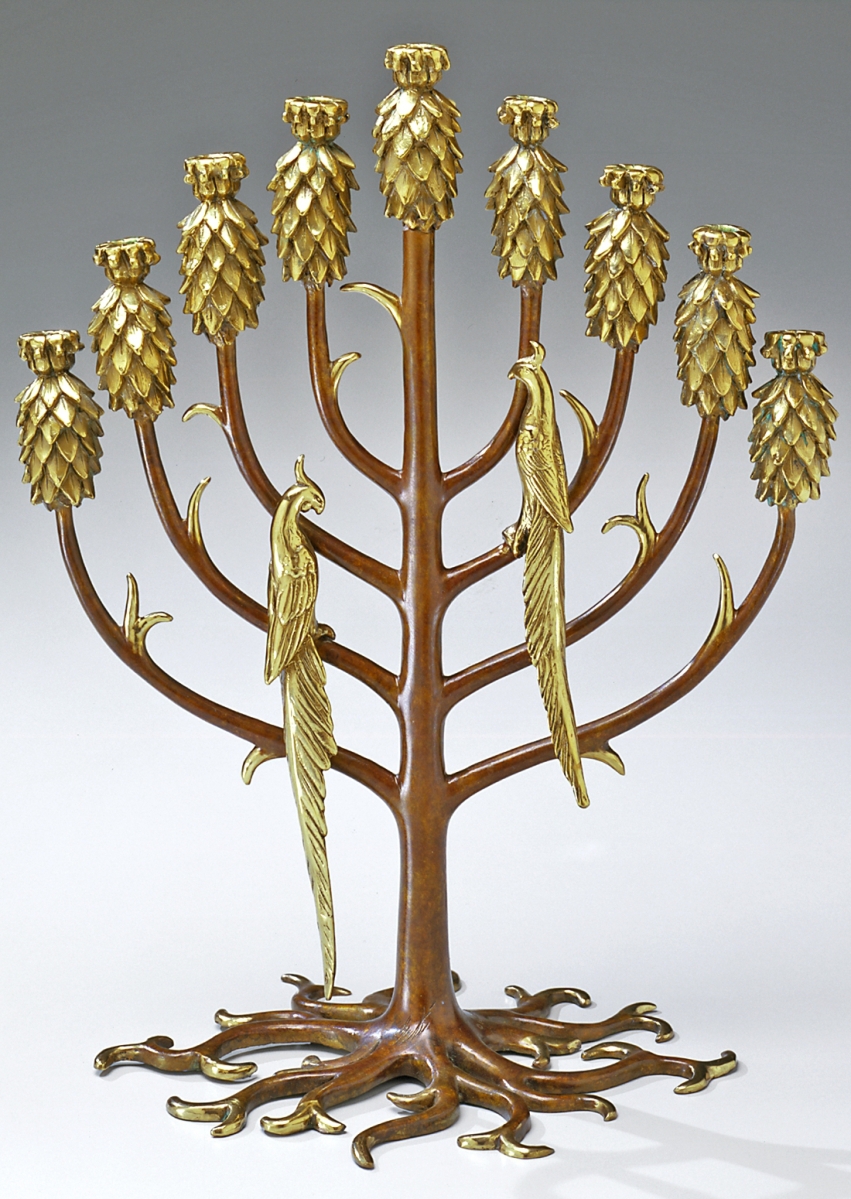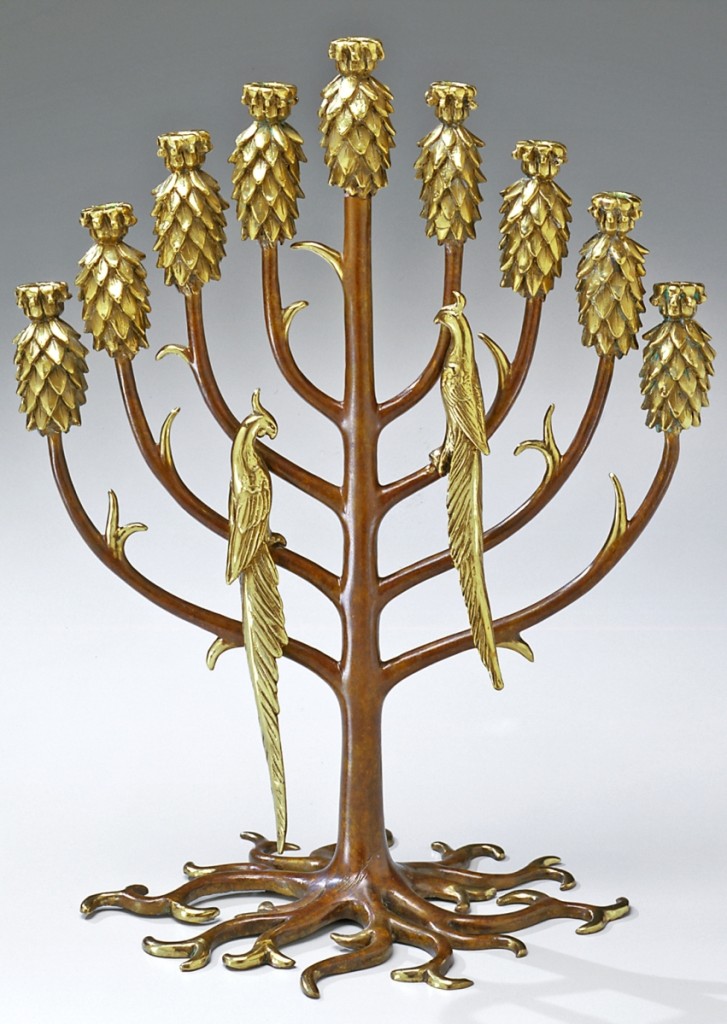
Tree of Life by Erté (Romain De Tirtoff), 1987, Farmingdale, N.Y., polished bronze, the Jewish Museum, bequest of Dr Louise Jacobson, 2004-28.
NEW YORK CITY – The Jewish Museum presents “Accumulations: Hanukkah Lamps” through February 9, featuring more than 80 Hanukkah lamps representing four continents and six centuries of artistic production. One of seven sections that make up the Jewish Museum’s third floor collection exhibition, “Scenes from the Collection,” “Accumulations” spotlights an aspect of museum collecting: the accumulation of multiple examples of a given work or similar works. The Jewish Museum’s collection of Hanukkah lamps is the largest in the world at nearly 1,050 pieces and has been amassed during the 114 years of the museum’s existence.
The holiday of Hanukkah celebrates a successful revolt for religious freedom in ancient Israel. The eight-night holiday takes place this year from sundown on December 2 through sundown on December 10. Through the centuries, the importance of Hanukkah has grown and with it the centrality of the lamp. The material that lamps should be made of has also been prescribed by rabbinical authorities, in order to fulfill the commandment in as beautiful a way as one could afford, using the most precious materials possible, ranging from gold and silver to acorn shells. There were no restrictions on the manner of decoration. This has allowed artists, designers and craftsmen great artistic freedom, often producing fantastical designs and shapes.
The selection of lamps on view range in date from the Renaissance to Thanksgiving 2013, when Hanukkah and Thanksgiving coincided. Originating in North America, Europe, Asia and Africa, the lamps are made of such materials as silver, copper, steel, tin, pewter, lead, glass, wood, clay, aluminum, concrete and silicone. Differences in their materials and styles reveal rich details of the lives of Jews throughout the world over the course of 600 years.
Exhibition highlights include a German early Eighteenth Century silver Hanukkah lamp from the Frankfurt ghetto decorated with knops and flowers, featuring the biblical heroine Judith holding the head of Holofernes; a mid-Eighteenth Century silver Hanukkah lamp in the rococo style from the Netherlands; a Nineteenth or Twentieth Century copper alloy Hanukkah lamp with a tower, from coastal North Africa; and a Moroccan copper alloy lamp from the second half of the Nineteenth Century that uses the Middle Eastern motif of a hand, or hamsa, in the center of the lamp’s backplate.
Pure lead lamps like one in the form of chairs, which were made in the Russian Empire in the mid-Nineteenth Century, were characteristic of Germany and Eastern Europe. Because the melting point of lead is very low, they were easily made and often melted down after the holiday to be recast the next year. A Hanukkah lamp created in 1942 by Arnold Zadikow and Leopold Hecht with wood stolen from the Nazis in Thereisienstadt (Terezin), a camp-ghetto in the former Czechoslovakia, is a rare example of Jewish ceremonial art made during the Holocaust.
In the early 1980s, Judaica artists, inspired by trends in the art world, began to explore atypical materials and to reimagine the traditional forms of ceremonial art. Between 1981 and 1982, sculptor Larry Kagan created eight steel variations on the Hanukkah lamp, playing on the material, structure, and space. Meant to be inventive rather than functional, they express the playful and joyous nature of the holiday and challenge notions of what a Hanukkah lamp can be.
The Jewish Museum is at 1109 Fifth Avenue at 92nd Street. For more information, www.thejewishmuseum.org or 212-423-3200.

